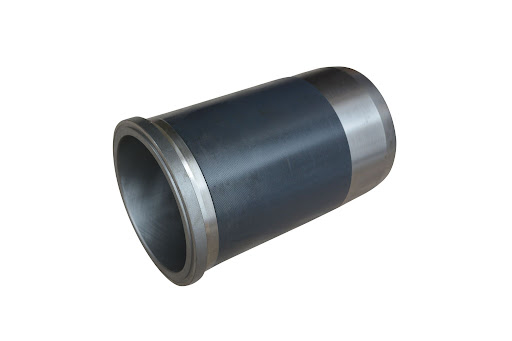A cylinder liner in a vehicle’s engine is one of the most essential parts to be found in the interior of the engine. A cylindrical part that fits into the engine of the vehicle, cylinder liners, or cylinder sleeves, as they are also known as, prevents excessive wear and tear and helps in the engine function. Located within the piston, cylinder liners or cylinder sleeves work to help with the longevity of the car parts and help in its smooth functioning.
Cylinder liners protect the wear and tear of both the piston rings and the liners themselves. There are three different types of cylinder liners or cylinder sleeves. No matter the type, the primary purpose of cylinder liners is to protect the piston from any wear and tear, albeit through heat, friction, or impurities. Cylinder sleeves and sleeves are mostly available in specialty shops as they are expensive and manufactured by only certain companies. Finding a reliable cylinder liners & sleeves manufacturer to get your cylinder liner is important for the health of your vehicle’s engine.
The Purpose
The cylinder liner, as the name suggests, forms an inner wall in the cylinder. This wall is such that it facilitates movement by providing a sliding surface for the piston rings. Lubricant facilitates this movement and prevents damage from friction. Some of the main purposes of cylinder liners or sleeves are:
- Minor wear on the cylinder liner due to lubrication.
- Comparatively minimal consumption of lubricant.
- Little wear on the piston ring like the cylinder liner.
- Cylinder sleeves also have high anti-galling properties.
During operation, the cylinder wall is constantly subjected to a high temperature which is caused by the content sliding of the piston and the piston rings. This causes friction and results in the heating up of the parts. The cylinder is also subjected to high pressure when the vehicle is functioning. Engines are the heart of any vehicle, and each manufacturer wants a longer life for their vehicle’s parts.
Most of the time, cylinder liners and cylinder sleeves are made of cast iron. This is so because cast iron has wear resistance which is ideal for the manufacturing of cylinder liners and cylinder sleeves. Many manufacturers have been shifting from cast iron to aluminum alloys due to the trend of producing lighter engines.
However, aluminum alloys have significantly more drawbacks in comparison to cast iron and are more prone to wear and tear with continuous operation. Cast iron cylinder liners and cylinder sleeves are thus used extensively. These help prolong the life of pistons and, by extension, the engine.
Types of Liners and Sleeves
Source: https://st4.depositphotos.com/1559610/26609/i/1600/depositphotos_266092604-stock-photo-a-set-of-parts-of.jpg
As mentioned above, there are mainly three types of cylinder liners. All of these work primarily to protect the piston from wear caused by heat. The methods of each type of liner for this are different. These are as follows:
-
Dry Cylinder Liners or Dry Cylinder Sleeves
Dry cylinder liners protect the piston against the damage caused by heat and impurities. Probably the most common cylinder liners, these are made of high-grade materials like ceramic nickel and cast iron. These liners or sleeves are comparatively thinner than wet cylinder liners and protect the piston by closely fitting with the cylinder block. These liners do not come in contact with the engine coolant.
2. Wet Cylinder Liners or Wet Cylinder Sleeves
Wet cylinder liners or sleeves are just as popular as their dry counterparts. They are made for the protection of the piston and are made of cast iron and ceramic-nickel as well. These liners are different from dry cylinder liners as they come in direct contact with the engine coolant while dry cylinder liners do not. This is why they are called dry and wet.
A different type of wet cylinder liner is a water jacket liner. These sleeves have small openings in the structure, which helps with the cooling of the piston and prevent damage from the heat. When it comes to the liners, if they do not come with a cooling jacket, they create jackets through their interaction with the jacket in the cylinder block.
3. Finned Cylinder Liners or Finned Cylinder Sleeves
These cylinder liners, like the other two types mentioned above, are built from the same material that lends their durability to these liners. Finned cylinder liners or sleeves have the main purpose of protecting the piston from impurities and high temperatures. Finned cylinder liners are particularly made for air-cooled engines.
The working of this cylinder liner or sleeve is exactly the same as a dry cylinder liner. The only difference is that for this liner, the cooling medium used for the motor is air. For cooling purposes, the structure of these cylinder liners has fins fitted in them. This helps with the inflow and outflow of air which facilitates the cooling of the piston.
The Takeaway
Cylinder liners or cylinder sleeves are thus extremely important for anyone who wants to prolong the engine’s life. Primarily used for heavy industrial machinery, marine equipment, and heavy-duty trucks, cylinder liners greatly influence the engine life. Proper manufacturing is essential to ensure seamless function, so choose the manufacturer with care.
